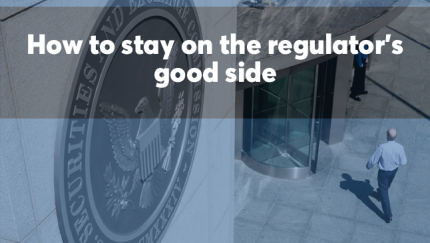The fiduciary rule is proving to be one tough survivor — for now.
So far, three lawsuits seeking to undo the rule have been rejected. Those come after years of lobbying by some of the industry's largest trade groups as well as fierce opposition from Republicans in Congress.

"The Obama administration did some extremely smart things to protect the rule, one of which was to establish an effective date in the middle of last year," says Blaine Aikin, executive chairman of fi360.
"That makes it much more difficult to kill," says Aikin, who was speaking at IMCA's annual New York conference.
Aikin also notes that Obama also had the backing of consumer groups, such as AARP. Moreover, several professional organizations of financial planners, such as the CFP Board, FPA and NAPFA, also backed the rule.
Certainly, the fate of the Department of Labor regulation is still uncertain – President Trump could still find a way to undo it.
-
"There are ways to potentially be cute with it. You could potentially cut out retirement business from the back-end bonuses," says an ex-Merrill Lynch executive who works in the independent space. "Cute doesn't usually work when it comes to regulators."
November 2 -
The early decision stops advisers from earning commissions on products that will also generate fees through the firm's Investment Advisory Program.
November 2 -
"We fully expect to offer a range of options to help our clients," CEO Paul Reilly said.
October 27 -
The decision is effective immediately and was made within hours of the Department of Labor issuing new regulatory guidance on the fiduciary rule's implications.
October 27 -
The wirehouse, which is embracing the new regulation, is the first to unveil its strategy in depth.
October 6
But Trump's memo issued last week didn't actually delay the implementation date. It only instructed the Department of Labor to review the rule and laid down a framework for a potential repeal.
Aikin said he wasn't sure the rule could be undone prior to its implementation date of April 10. It took the Labor Department six years to craft and promulgate its fiduciary standard.
"Only one thing is certain, and that this is the rule on the books today," he says. "That tells me that some version of this rule will survive in some way. And I think as a practical matter, there is no turning back."
IN TRUMP'S HANDS
The most recent court decision in favor of the rule, issued this week, firmly puts the burden on the president to decide the rule's fate.
"Given that none of the litigation attempts have succeeded and no other decisions are on the horizon, it has forced the hand of the administration to decide whether it wants to" immediately delay the rule's applicability date, says Jean-David Larson, director of regulatory and strategic initiatives at Russell Investments.
Larson says in an email that fiduciary proponents won't "go quietly into the night" if the department moves to delay.
"This, along with some other policy and regulatory issues, will be highly partisan," he says.
Ron Rhoades, professor and program director of the Financial Planning Program at Western Kentucky University, says that the court rulings defending the regulation will have long term implications.
"Even if the DoL later decides to delay, and then eventually rescind, the fiduciary rule, the court decision will remain as clear authority that the adoption of the fiduciary rule was clearly within the DoL’s authority and was reasonable. As soon as the political climate shifts again, I would anticipate relatively quick adoption of the fiduciary rule all over again," he says in an email.
From recommending wrong share classes to cherry-picking allocations, these are the pitfalls advisers should avoid.
Skip Schweiss, managing director of corporate services at TD Ameritrade and also in attendance at the conference, says there has also been a "tsunami of consumer press" coverage of the rule.
"That means that a lot of your clients are reading these things and maybe asking you advisers about it," Schweiss told attendees.
That raises the political stakes of substantially altering or overturning the rule.
Larson points to additional ramifications from the fact that many firms have spent the past year preparing for implementation.
"Some of the technical and behavioral changes the DoL rule was attempting to bring to light and change are already making their way through the market. In that sense, even if delayed, it will have achieved some of the prior administration’s objectives," he says.






